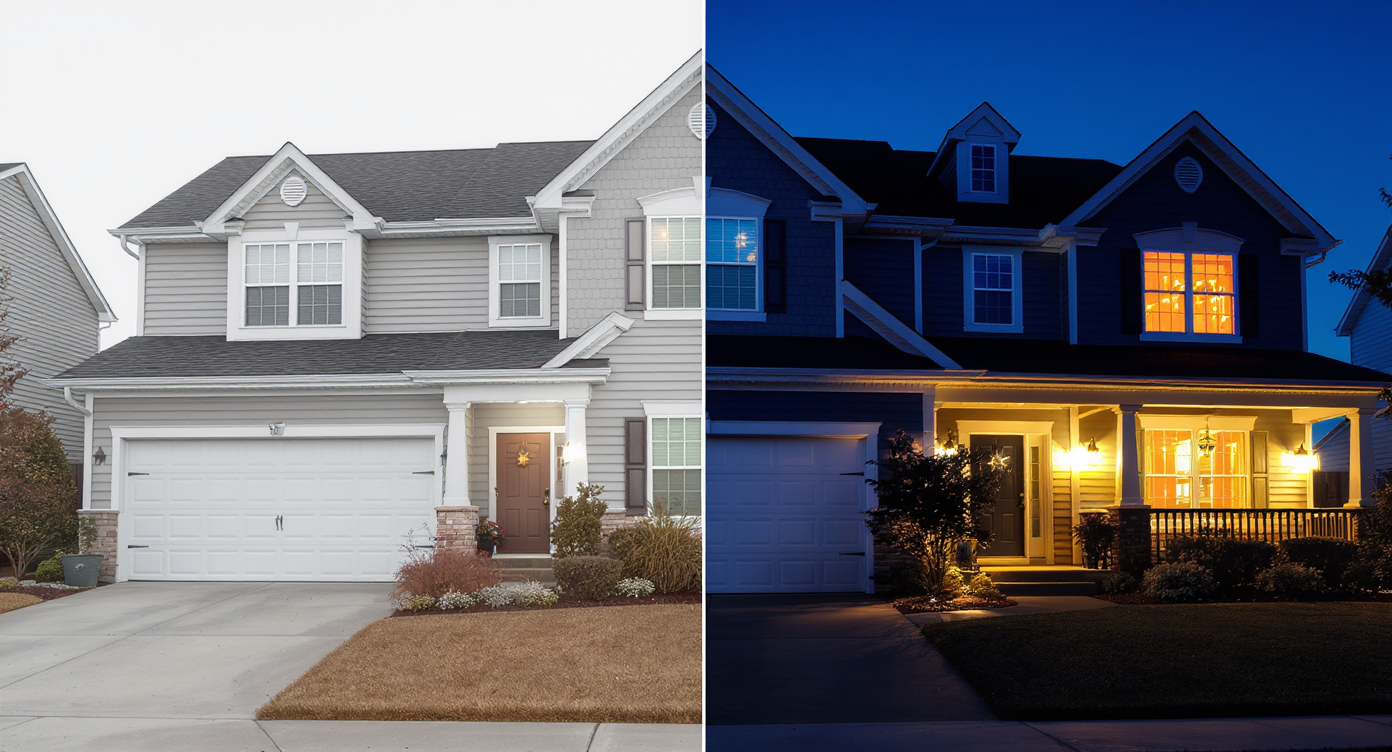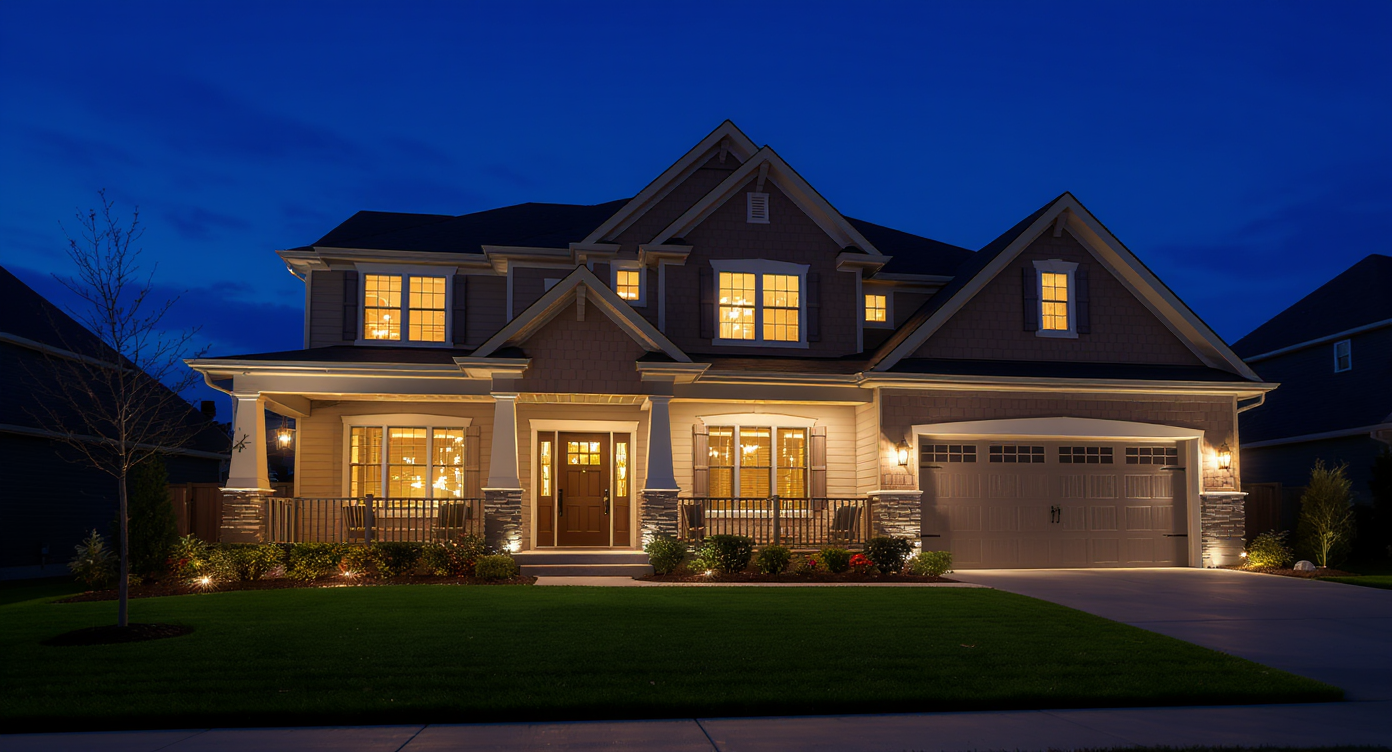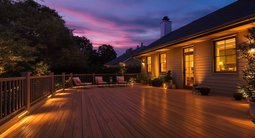TL;DR
Twilight photo editing, also called day to dusk or virtual twilight, turns daytime real estate photography into the glow and drama of blue hour. The warm windows, cooler sky, and soft exterior lighting make listings look premium and increase click-through. Use it strategically on your hero exterior to boost curb appeal and online listing performance.
Opening Context: Why Twilight Imagery Wins in Real Estate

Virtual twilight editing transforms ordinary daylight photos into mood-rich evening views digitally.
Twilight photo editing is the quiet catalyst behind many standout listings in real estate photography. In crowded feeds, a single twilight photo can double thumbnail engagement compared to flat midday shots in many markets. Buyers respond to contrast: warm interior light against a cobalt evening sky. The result is curb appeal that feels cinematic and premium. Here’s the real search intent: agents and sellers want better online listing performance without waiting for the sun to cooperate. That’s where day to dusk, twilight photo conversion, and virtual twilight editing step in. These techniques let you capture exteriors at noon and still publish an evening mood. With smart listing photo editing, your first image can tell a complete exterior story, from glowing porch lights to a welcoming path—alt text idea: “front elevation at dusk with warm windows and blue hour sky.”
How Day-to-Dusk Editing Works (Virtual Twilight for Real Estate Photography)

Day-to-dusk editing plugs in warm light and evening skies to elevate exterior photos instantly.
Day to dusk is a digital transformation that reshapes a daytime exterior into a believable twilight photo for MLS and portals. At its core, the process maps the logic of light. Editors start by balancing the base exposure, then replace the sky with a realistic blue-hour gradient that darkens upward from horizon to zenith. They warm window interiors slightly so rooms feel “on,” add soft pool and landscape accents, and lift practicals like porch lanterns. Shadows are adjusted to match the sky’s direction, reflections in glass and water are cooled, and color casts are tuned so trim stays white and grass stays green instead of neon. If a photographer captured multiple frames, HDR merges protect dynamic range before the twilight conversion begins. For agents curious about how to convert day photos to dusk for real estate, there are two paths: AI-assisted tools that quickly apply virtual twilight, and manual retouching for high-end realism. The best day-to-dusk editing for property listings blends both—automate the sky and basic glow, then refine edges, mask trees cleanly, and paint subtle light falloff on steps and soffits. A practical workflow: choose a sky with the same weather logic as the original (no storm clouds over a sunny lawn), set overall exposure roughly one stop darker than daytime, warm windows to about 3200–3800K, and add a gentle vignette to focus the eye on the entry. Alt text idea: “backyard pool at dusk with subtle water reflections and lit patio string lights.” Pro move for MLS clarity: keep the hero exterior slightly brighter than a true night scene so details read in a small thumbnail; save full moody shots for later in the carousel.
Anecdote
A midweek condo launch lagged until the agent swapped the hero image for a restrained virtual twilight showing the balcony lanterns and city glow. Saves jumped, and the first showing booked within an hour.
Why Twilight Photos Sell Better

Twilight photos boost buyer interest by highlighting warm, inviting contrasts that pop online.
Virtual twilight images increase curb appeal because warm-cool contrast catches the eye in small thumbnails and invites a click. Buyer psychology favors scenes that feel safe, inviting, and move-in ready. The glow of interior lights suggests life inside and implies a home that is cared for. A good twilight photo conveys rhythm: pathway lights leading to the door, a soft sky that frames the roofline, and a hint of landscaping detail. That mood delivers why twilight real estate photos get more clicks: they promise comfort and story in one glance. From a marketing standpoint, a single twilight exterior can anchor your gallery. Start the carousel with virtual twilight, follow with daylight details, then return to dusk for lifestyle spaces like a fire pit or pool. This narrative approach increases time-on-listing and helps the home feel premium without altering its true features. If you need to explain it to sellers, frame it as enhancing presentation, not changing reality—like staging with light. Alt text idea for your hero: “twilight front facade with lit porch, path lights, and blue gradient sky.”
Common Mistakes & Pro Tips for Day-to-Dusk Editing

Avoid mismatched light colors to maintain realistic, believable virtual twilight images.
The quickest giveaway in listing photo editing is mismatched light logic between sky, windows, and shadows. Common Mistakes & How to Avoid Them
- Overcooked skies: If the sky looks purple and the lawn glows neon, buyers feel something is off. Use a natural blue-hour gradient and keep grass saturation in check.
- Flat window glow: Windows should vary in brightness and color temperature. Paint gentle gradients and add a faint interior shadow line at mullions for realism.
- Wrong shadow direction: Make sure hedge and gutter shadows lean the same way the light suggests. If the skyline brightens left, shadows should fall right.
- Inconsistent reflections: Cool the reflections in glass and water to match the new sky; don’t leave a midday tree reflection under a twilight sky.
- Lights on at high noon: If the sky is barely dim, don’t blast every fixture. Use selective lighting so exterior mood feels plausible.
Real Stories, Micro-Anecdotes & Tools for Virtual Twilight

Real stories prove virtual twilight can uplift listings and captivate buyers immediately.
A single virtual twilight image can reposition a listing overnight by elevating first impression and encouraging more clicks. Real Stories / Micro-Anecdotes - The cloudy-day turnaround: A photographer in a rainy market shot a Cape Cod at noon under flat skies. A day-to-dusk edit added a calm blue gradient, window warmth, and subtle eave glow. The agent reported the hero twilight doubled inquiries in the first 48 hours compared to a prior daytime hero on a similar listing. - Seller hesitation to believer: One homeowner worried a twilight photo would feel “fake.” The editor kept the sky light and used restrained porch lighting. The image felt honest yet inviting; showings spiked that weekend, and the seller later asked for a dusk backyard feature to lead the carousel on social. - Pool that finally popped: A suburban property had a great pool that disappeared at noon. Virtual twilight lifted water reflections and patio sconces, turning an average yard into a lifestyle moment that boosted saves and shares. Tools & Resources The best day-to-dusk editing for property listings can be AI-assisted or fully manual, depending on budget and timeline. - For AI day-to-dusk or virtual twilight: ReimagineHome - For manual twilight editing & full-service photo enhancement: Styldod Choose AI when speed matters for a new MLS launch, then refine with manual retouching for the hero image that carries your marketing. Test two versions in your listing rotation and let click-through decide the winner.
Visualization Scenario
Picture a craftsman facade shot at noon: replace the white sky with a soft cobalt blend, warm the living room windows to a cozy amber, tick on the porch sconces, and cool the driveway’s reflection so the entry becomes the focal point.
FAQ: Day-to-Dusk Editing, Twilight Conversion, and Listing Photo Editing
How do I convert day photos to dusk for real estate? Use a day to dusk or virtual twilight workflow: replace the sky, warm windows, balance shadows, and align reflections. You can try AI tools for speed or hire manual listing photo editing for the hero image. What’s the best way to use a twilight photo on MLS? Lead with one twilight photo as the hero and follow with daylight details, then return to dusk for outdoor lifestyle shots. This sequence maximizes curb appeal while keeping the gallery informative and honest. Why do twilight real estate photos get more clicks? The warm-cool contrast makes thumbnails pop, boosting online listing performance. A twilight photo signals premium presentation and can increase time-on-listing and saves. How can I enhance real estate photos for MLS without overdoing it? Keep color temperatures coherent, maintain texture in siding and trim, and avoid neon greens or purple skies. Subtle virtual twilight editing for real estate agents is better than heavy effects. Is virtual twilight misleading to buyers? No, if you keep features accurate and only enhance light and mood. Treat it like staging with illumination rather than inventing elements that don’t exist.
Soft Closing Reflection
Great listing photography is presentation with purpose, and twilight conversion is presentation through light. A thoughtful virtual twilight photo does not pretend; it clarifies. It takes the home you already have and frames it at its most welcoming hour. In an online-first market, that welcome can be the difference between a quick click past and a meaningful pause that becomes a showing.
.svg)

.svg)














.png)